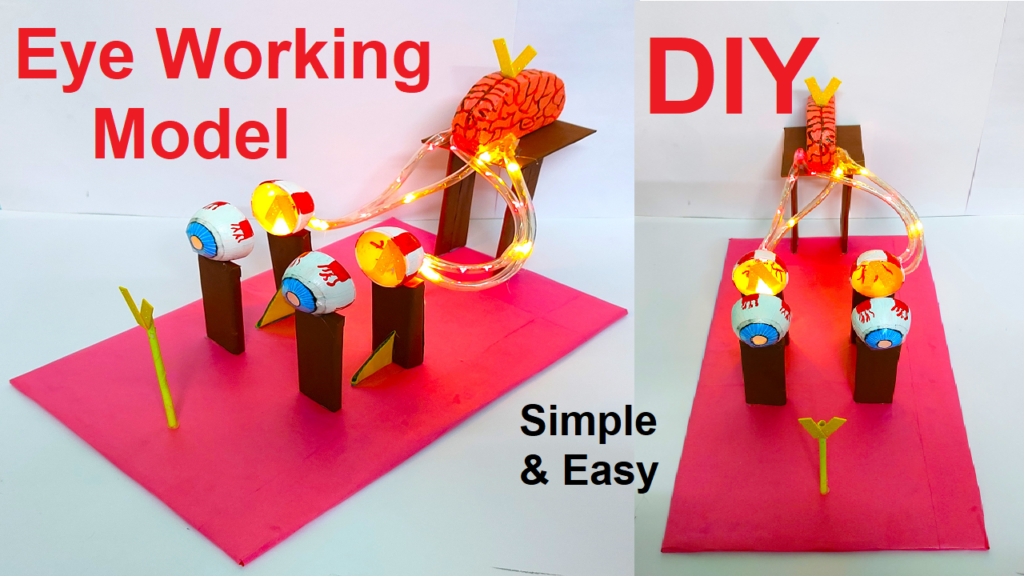Introduction:
Understanding how our eyes function is a journey into the marvels of biology and optics. In this project, we’ll create an advanced working model to simulate the intricate process of vision.

We’ll use LED bulb covers to represent the cornea and lens, a transparent pipe to mimic the optic nerves, and a torch light to simulate incoming light. Let’s embark on this enlightening adventure!
Materials Needed:
- LED bulb covers (2)
- Transparent pipe (about 1 meter long)
- Serial Lights
- Torch light
- A dark room or a space where you can control the lighting
Building the Eye Model:
Simulating the Eye’s Components:
Step 1: Set Up the LED Bulb Covers
- Take two LED bulb covers. These will represent the cornea (outer surface) and lens (inner surface) of the eye.
Creating Darkness:
Step 2: Turn off the Lights
- In a darkened room, turn off all lights. This will help us observe our model clearly.
Introducing the “Incoming Light”:
Step 3: Use the Torch Light
- Hold the torch light (representing incoming light) in a position where it’s aimed towards the LED bulb cover representing the cornea.
Observing Refraction:
Step 4: Position the Torch Light
- Angle the torch light so that it shines through the LED bulb cover. Observe how the light passes through.
Step 5: Observe Refraction
- Notice how the LED bulb cover, representing the cornea, refracts or bends the incoming light. This is similar to what happens when light enters our actual corneas.
Simulating Lens Adjustment:
Step 6: Introduce the Second LED Bulb Cover
- Position the second LED bulb cover (representing the lens) behind the first one (cornea) in a way that the light passes through both.
Step 7: Observe Further Refraction
- Note how the light further refracts as it passes through the second LED bulb cover, representing the lens. This mimics the lens’s role in focusing incoming light.
Modeling the Optic Nerves:
Step 8: Add the Transparent Pipe
- Attach one end of the transparent pipe to the second LED bulb cover, representing the lens. The pipe symbolizes the optic nerves, which transmit visual information to the brain.
Step 9: Position the Pipe
- Extend the transparent pipe away from the model, allowing it to represent the path of the optic nerves.
Understanding the Eye’s Process:
By following these steps, we’re simulating how the cornea, lens, and optic nerves work together to focus and transmit incoming light to the brain for processing.
Conclusion:
Through this advanced working model, we’ve gained a deeper understanding of how the cornea, lens, and optic nerves collaborate to facilitate vision. This process is a testament to the intricacy of the human visual system and its ability to perceive the world around us.

